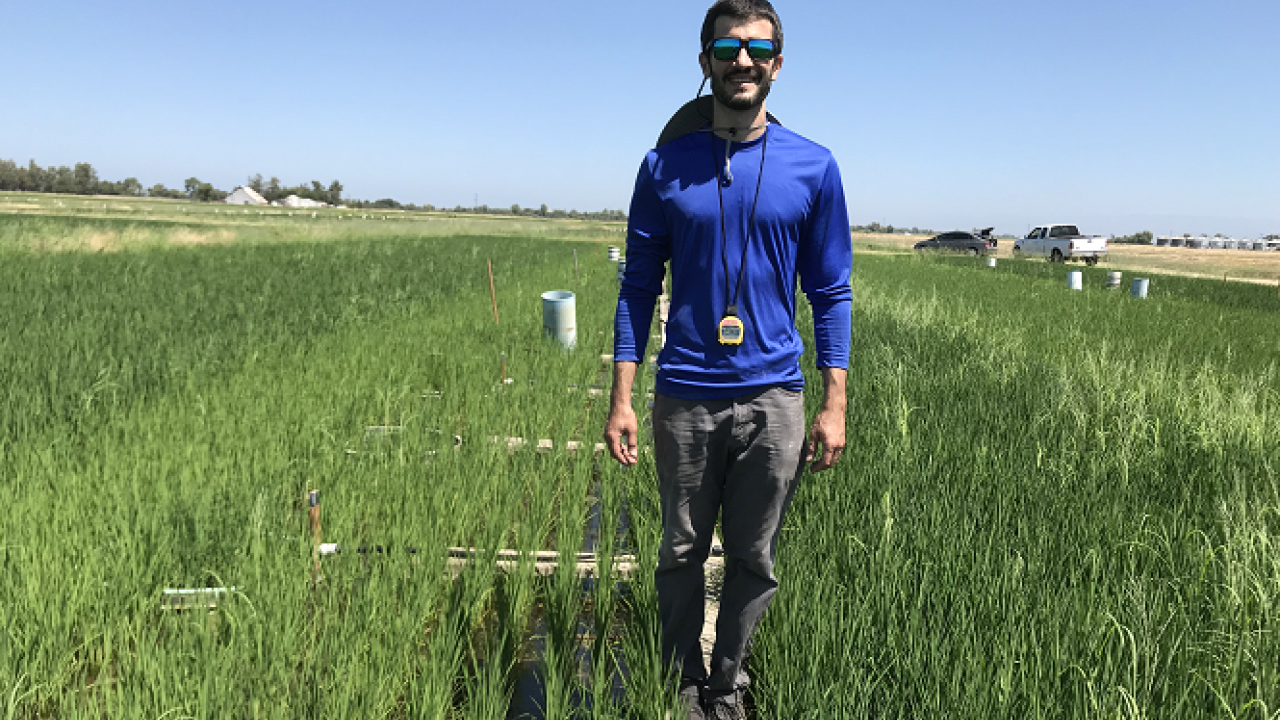
Peter Geoghan: Measuring and Modeling Nitrogen Fertilizer Losses and Nitrous Oxide Emissions in Drill Seeded Rice
The importance of rice is hard to overstate, as a staple crop for more than 3.5 billion people which represents roughly 20% of the world’s per capita dietary energy. As food demands grow with an increasing global population over the next few decades, and a stagnation in the increase in total acreage in rice production globally, farmers are faced with the challenge of increasing production efficiency for higher yields. Through funding from the California Rice Research Board and the Henry A. Jastro award, my IAD research was made possible to quantify nitrogen(N) fertilizer losses in drill seeded rice systems in California, with the intention of providing growers with a simple tool to estimate and help determine where losses might be mitigated and supplemented to optimize yield outcomes.

Unlike the vast majority of California rice production, where rice is seeded by airplane into flooded fields, drill seeded fields are fertilized and seeded into dry ground with a tractor. To encourage uniform crop emergence in drill seeded rice, growers flood their fields for 24-48 hours and then drain for 7-12 days. This process is repeated and as these soils transition from anerobic to aerobic conditions and back again, the ammonium (NH4) fertilizer is converted to nitrates (NO3) through the process of nitrification, and likely lost through denitrification as nitrogen gas (N2) or the potent greenhouse gas, nitrous oxide (N2O). To measure the rate of nitrification and total nitrate accumulation during these drains, I conducted experiments at the Rice Experiment Station (RES) in Biggs, California during the 2019-2020 growing seasons, where soil samples were collected every two-three days and analyzed for NH4 and NO3. Rough estimates show a potential loss of 25-30kg N/ha of the 160-170kg N/ha that growers typically apply pre-planting as a result of this water management practice.
In addition to N losses in drill-seeded rice, there is concern with N2O emissions that occur as a result of denitrification during drained periods. As a secondary component to my research, I measured methane (CH4) and N2O emissions during the drains and through the entire growing season, to estimate the global warming potential of these systems. Rice production globally contributes some 1.5% of total anthropogenic emissions and limiting these has become an increasingly important challenge towards mitigating climate change. By minimizing the amount of time growers dry their fields, particularly during the second drain when nitrification and denitrification rates accelerate, growers can both limit their N losses and environmental impact.

It is difficult to compare California rice production and our Mediterranean climate with the subtropical climates that are typical of rice producing regions in the developing world, but my hope is that this research contributes to the body of scientific knowledge that helps us understand biological and chemical processes that govern farmer’s ability to meet food security demands. Growers in the developing world also lack many of the resources and infrastructure to flood and drain their fields that California growers do, and face challenges with variable irrigation water access and infrastructure. The ability to estimate N losses when rice fields dry after an N fertilizer application is just one of the many tools that science can hopefully provide small shareholder farmers around the world in continuing to serve as the backbone of food systems for so many.